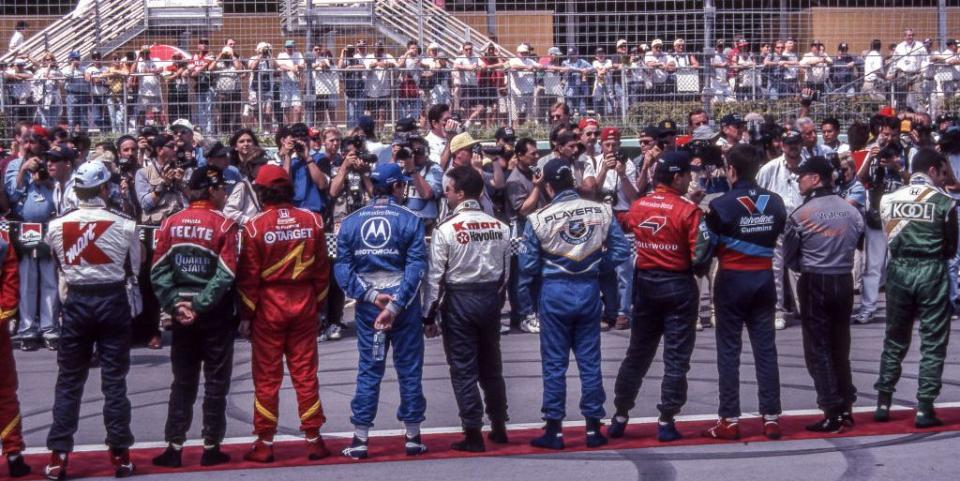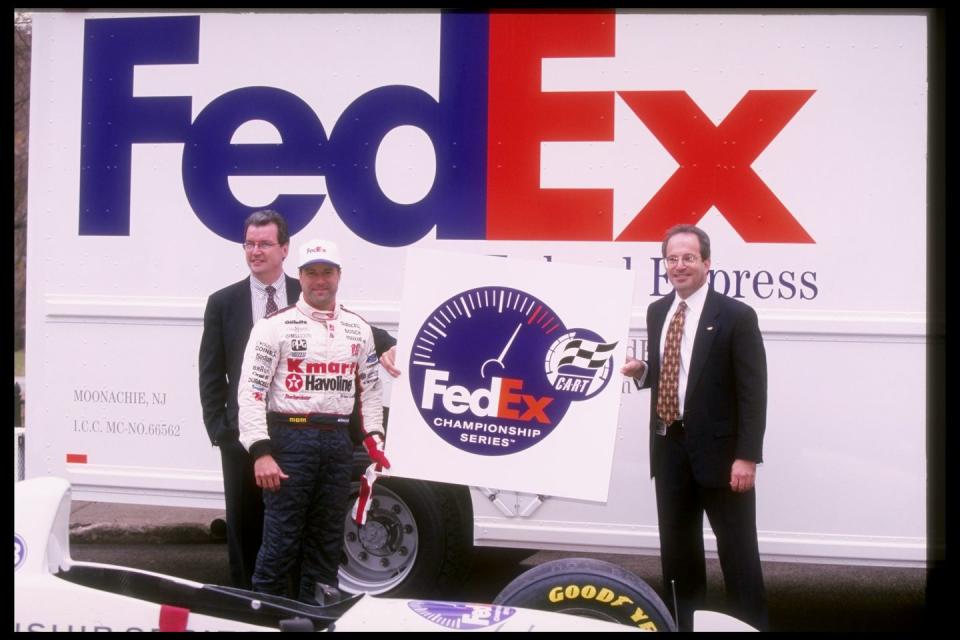Former CART Boss Says Without IRL/CART Split, IndyCar Would Be 'Much, Much Stronger'

In the 1980s and into the mid-1990s, CART Indy-car racing was the most popular auto racing series in the country.
Indianapolis Motor Speedway president/CEO Tony George wanted CART to go in a different direction, one that downplayed foreign drivers in favor of more American-born racing talent, as well as decreasing the number of road/street course races in favor of more oval tracks like IMS.
Andrew Craig—CART's chief executive during the split era—says IndyCar is still recovering from the split of 25 years ago.
The split between the upstart Indy Racing League (IRL) and the established Championship Auto Racing Teams (CART) that began in 1996 and remained a deep chasm until reunification in 2008 nearly destroyed Indy car racing in the United States.
In the 1980s and into the mid-1990s, CART racing was the most popular auto racing series in the country. But Indianapolis Motor Speedway president/CEO Tony George wanted CART to go in a different direction, one that downplayed foreign drivers in favor of more American-born racing talent, as well as decreasing the number of road/street course races in favor of more oval tracks like IMS, the most famous race track in the world and host of the biggest race in the world, the Indianapolis 500.

CART officials and team owners balked at George’s insistence, ultimately leading to their ousting of him from the organization’s board of directors. That move led George to create the IRL and, coupled with his edict that only eight spots would be open for CART teams to qualify for the 1996 Indy 500, forced a CART boycott of teams competing in the 500 for several years.
The contentious battle between the two warring series led to NASCAR rising to prominence and eventually to become the most popular motorsports series in the U.S.
No one was more involved in negotiations with the IRL than the man who was president of CART at the time, Andrew Craig. He had only been on the job about a week when in 1994, and while CART was racing halfway around the world at Surfer’s Paradise, Australia, that George revealed his initial plans for the IRL and how it would impact and change the Indianapolis 500, beginning with the 1996 season.
Craig, along with numerous key owners in CART including Roger Penske, Chip Ganassi, Pat Patrick and others, tried for more than a year to sway—or at the very least, compromise —with George. But George wouldn’t budge. He felt his way was the best way for open-wheel racing in the U.S. and that if CART didn’t like it, it was either his way or the highway.
As history went on to be written, George’s vision turned into a nightmare for open-wheel racing in the U.S., all but destroying it. The reunification of the two series in 2008 came late, but it was better late than never. Still, Indy car racing continues to be a shadow of its former pre-IRL self, remaining a distant second to NASCAR in terms of popularity and TV ratings—albeit IndyCar’s numbers have started to increase the last several years, and offer the promise of continued growth now that Penske has assumed control of IMS and the NTT IndyCar Series.
“A lot, obviously, has changed, but in many ways, nothing has changed,” Craig told Autoweek. “Motor racing continues to be strong, is under new leadership, which I think is very positive. At the same time, the racing remains with the very same high quality it was 25 years ago. So, from an operational point and new organizational and ownership point, things have changed dramatically from that time, but the consistent component from my time to the present day is the racing and the drivers and the teams remain in the very highest standards.”

George failed in a bid to buy CART in 1991. “It was turned down quite decisively,” Craig said. “I think that’s when the idea of the IRL was born. I think also my appointment wasn’t well-received, because I think Tony wanted his man in there, which wasn’t going to happen.
“The actual announcement of the IRL was something completely beyond my control. But by the end of 1994, my first year, I did indeed have several talks with Tony and by that stage, it was very clear that the idea of his series had not been well-received.

“The last thing the tracks wanted was to become part of a series with the Indy 500 because they knew exactly what would happen, they would become satellites built around and everything would be built around this one event each year, the Indy 500.
“That’s why 14 of the race tracks signed long-term contracts with us. They didn’t want that. They still had very bad memories, many of them, of when the United States Auto Club ran the series (and which led to the split between USAC and the creation of CART in 1979). … They certainly didn’t want to go back to that.”
George’s insistence that the series be made up of almost entirely American-born drivers also did not sit well with CART’s team owners and sponsors.
“The Indianapolis 500 is steeped in tradition and there’s nothing wrong with that,” Craig said. “It's a fabulous, traditional American event. There's no question about that. As for the oval reason (George’s desire to make it an all-oval series), while very important, the reality was other forms of racing came along and certainly had a valid place in the series.
“And I think one of the things our fans really liked about IndyCar was this combination, it was ovals, road courses, street races, and you needed a really well-rounded driver to be successful in all those different environments. I thought at the time that actually a mixture was good. I think there were a couple oval factions that maybe (George) wasn't getting the best advice sometimes.

“As far as American drivers, I think it was a valid point there, certainly having American talent in an American series was very, very important. There were more drivers coming into the series from abroad. However, I'd have to say this, domestic drivers worked really hard to have the finances necessary to help them develop their careers and that's fundamentally part of the model, basically, the drivers brings sponsors with them.
“But this idea of rich foreign drivers were stealing American drives, I think that was misstated. This was the world’s biggest economy here. What it was was dedicated, committed drivers going out and finding sponsors and helping teams to be economically viable. It wasn't they were stealing rides, it’s just they were good at raising money. That’s the honest truth. With that said, of course, we would have liked to and wanted to have more American talent in the series.”

 Yahoo Autos
Yahoo Autos 